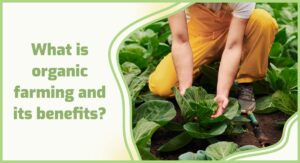A Beginner's Guide

Embarking on the journey of organic gardening and permaculture is a rewarding experiences. When you first set out to transform a small patch of land into a thriving, sustainable garden, you wante to work with nature—not against it. Here’s a detailed guide to help you get started on your own path toward a greener, healthier lifestyle.
1. Embrace the Organic Gardening Philosophy
Organic gardening is all about nurturing life naturally. This means avoiding synthetic chemicals and focusing on building healthy, living soil. For beginners, it starts with understanding that every seed, plant, and microbe plays a crucial role in your garden’s ecosystem.
Why Organic?
Organic practices not only yield nutrient-rich produce but also promote biodiversity, protect local wildlife, and reduce pollution.Personal Note:
I remember the excitement of planting my first organic vegetable garden—knowing that each step I took was contributing to a healthier environment made every moment special.
2. Plan Your Garden Space
Start by sketching out a plan of your garden. Consider sunlight, water access, and the natural layout of your land.
Location Matters:
Choose a spot that receives at least 6-8 hours of sunlight daily. This is crucial for most vegetables and herbs.Design with Permaculture in Mind:
Permaculture isn’t just about gardening—it’s a design philosophy that mimics natural ecosystems. Plan your garden to include diverse plant species that support each other, reduce pests naturally, and conserve water.Personal Tip:
I often draw inspiration from nature itself, using the natural curves of my land to design raised beds and pathways that feel organic and efficient.
3. Prepare Your Soil: The Heart of Your Garden
Healthy soil is the foundation of every successful garden. Here’s how to prepare it:
Test Your Soil:
Begin by testing your soil’s pH and nutrient levels. This will help you understand what amendments might be necessary.Build Organic Matter:
Incorporate plenty of organic matter through compost, well-rotted manure, and cover crops. These additions improve soil structure and fertility.Personal Experience:
When I first started, creating my own compost pile was a game-changer. It taught me how recycling kitchen scraps and garden waste could breathe new life into my soil.
4. Start Composting and Using Natural Fertilizers
Composting is both an art and a science. It transforms organic waste into a nutrient-rich resource for your plants.
How to Compost:
Layer green (nitrogen-rich) materials like vegetable scraps with brown (carbon-rich) materials like leaves and straw. Keep the pile moist and turn it occasionally.Natural Fertilizers:
Once your compost matures, use it to enrich your garden beds. You can also experiment with homemade organic fertilizers like compost tea.Personal Note:
The satisfaction of using something you’ve created from your own waste to nourish your garden is unparalleled. It’s a cycle of renewal that truly embodies sustainable living.
5. Selecting the Right Plants and Companion Planting
Choose plants that are well-suited to your local climate and soil conditions. Embrace the diversity of nature by integrating a variety of vegetables, fruits, herbs, and flowers.
Companion Planting:
Some plants naturally support each other. For example, planting basil near tomatoes can enhance growth and flavor while deterring pests.Start Small:
Begin with a few easy-to-grow varieties, then gradually expand as you gain confidence and experience.Personal Experience:
I found that starting with familiar vegetables like tomatoes, lettuce, and herbs not only built my confidence but also provided quick wins that kept me motivated.
6. Incorporate Permaculture Principles
Permaculture is about designing a garden that works with nature to create a self-sustaining ecosystem.
Design Your Layout:
Create zones based on plant needs. For instance, place frequently used herbs and vegetables close to your kitchen for easy access.Water Conservation:
Use techniques like mulching, rainwater harvesting, and drip irrigation to conserve water and reduce waste.Personal Insight:
I’ve learned that thinking like nature—embracing cycles, diversity, and natural patterns—can transform even the smallest garden into a thriving ecosystem.
7. Maintain, Learn, and Enjoy
Organic gardening and permaculture are ongoing processes. Regular maintenance, observation, and a willingness to learn are key.
Seasonal Adjustments:
Adapt your garden techniques with the seasons. Rotate crops, update your compost, and keep learning new sustainable practices.Community and Resources:
Connect with local gardening groups, attend workshops, or follow trusted online resources. Sharing experiences can offer invaluable insights.Personal Reflection:
Every harvest, every challenge, and every lesson learned reinforces my passion for sustainable living. The journey is as rewarding as the results, and each step is a reminder of the power of working with nature.
Conclusion
Starting your organic garden and permaculture journey at home is about more than just growing food—it’s about cultivating a lifestyle that honors the earth and nurtures your well-being. By embracing organic methods, planning thoughtfully, and learning continuously, you can create a vibrant, self-sufficient garden that stands as a testament to sustainable living.
Remember, I’m not an expert in every aspect, but I’ve found that the best advice often comes from hands-on experience and a genuine love for what you do. So, roll up your sleeves, dive in, and let nature guide you to a healthier, more fulfilling way of life.
